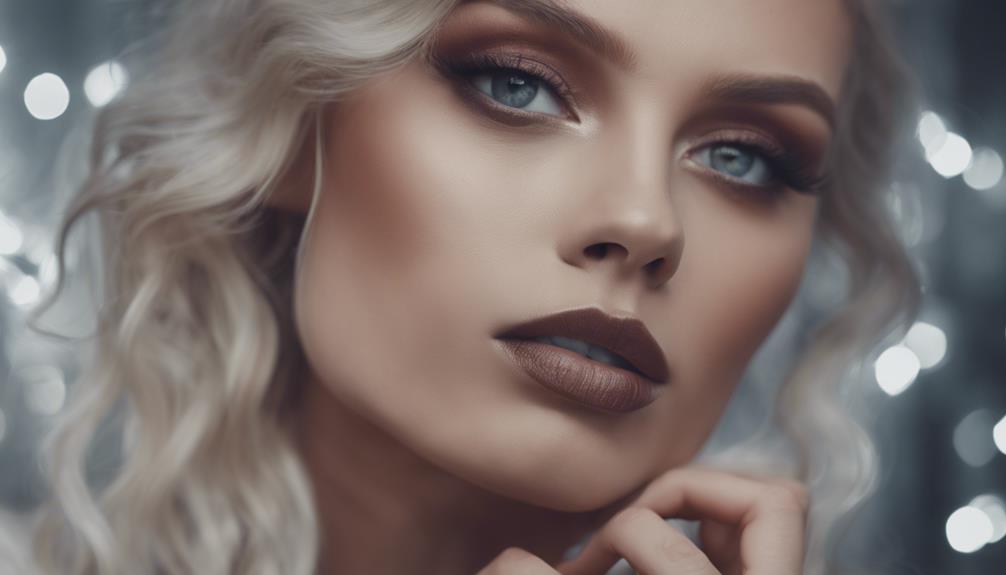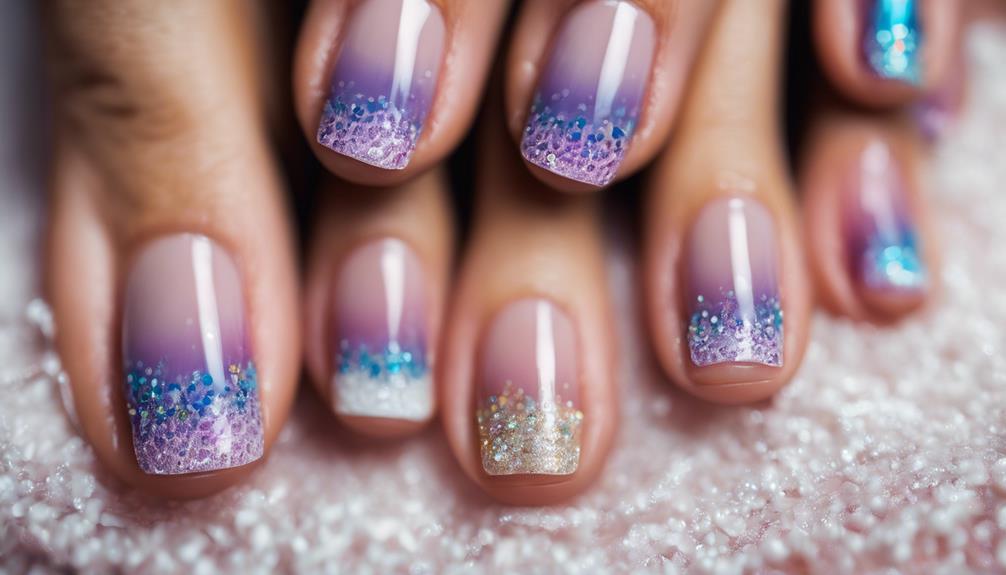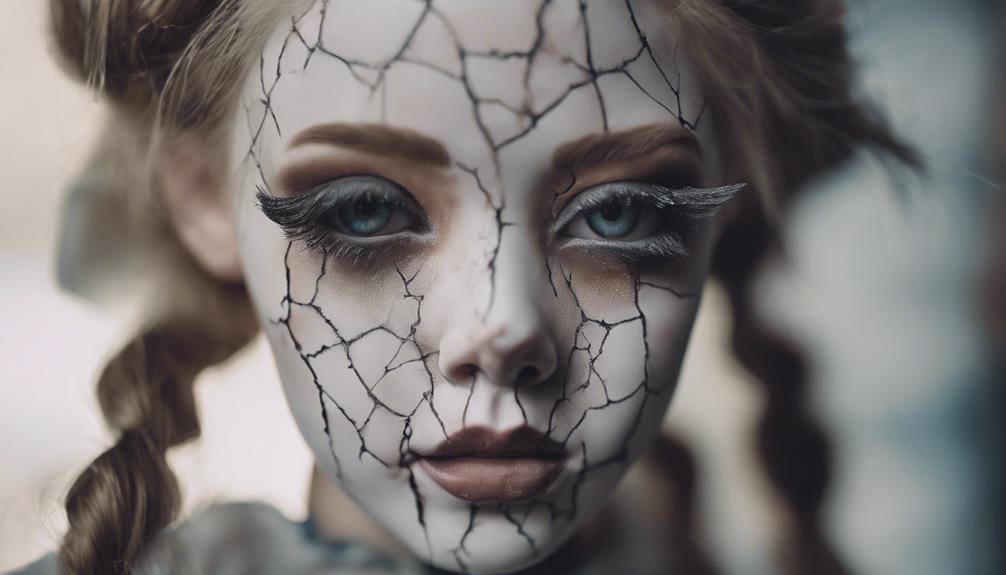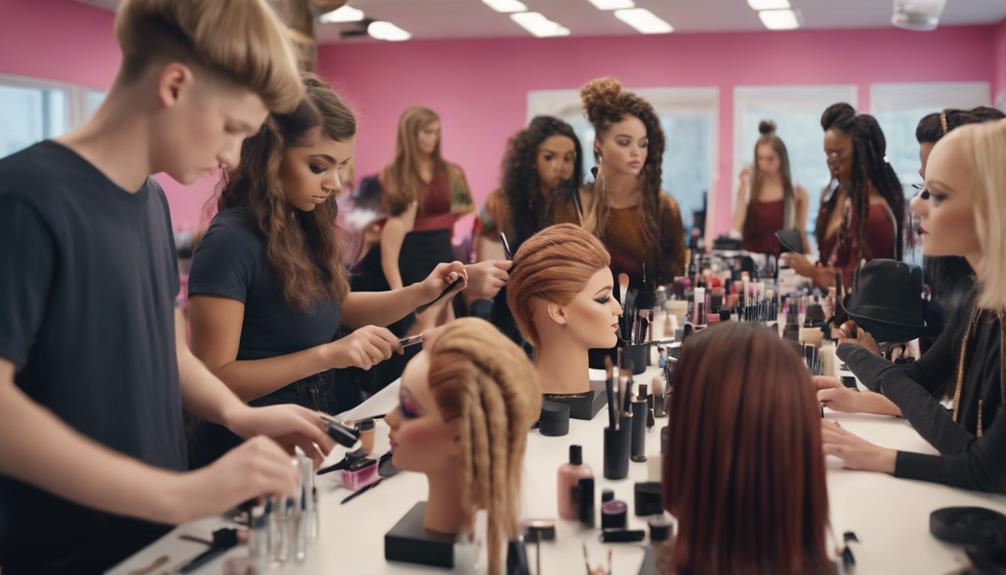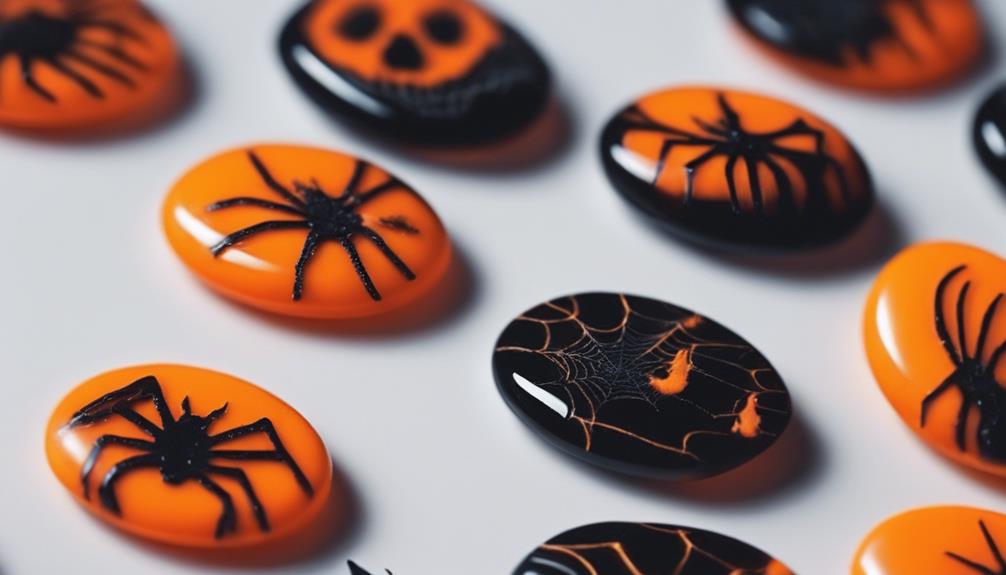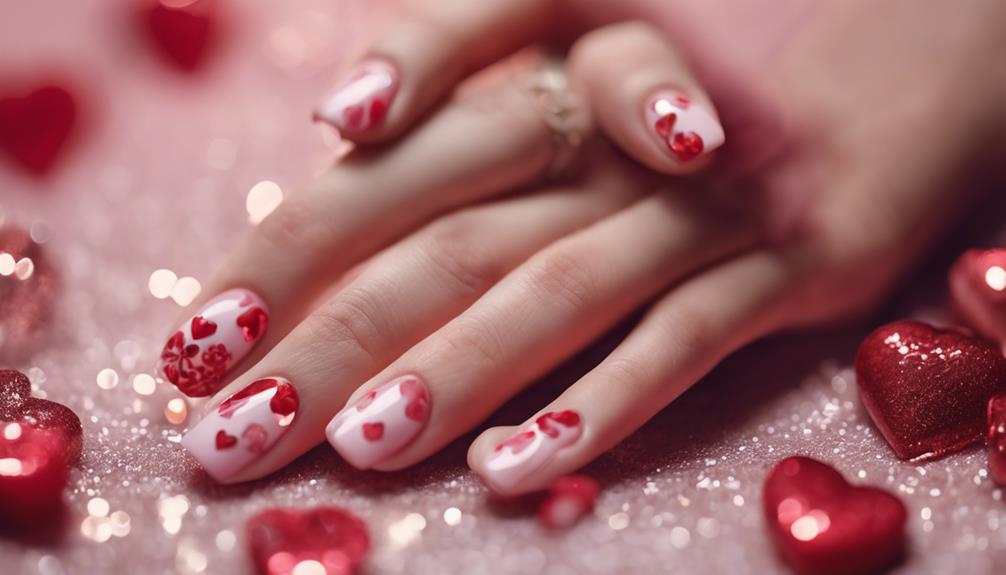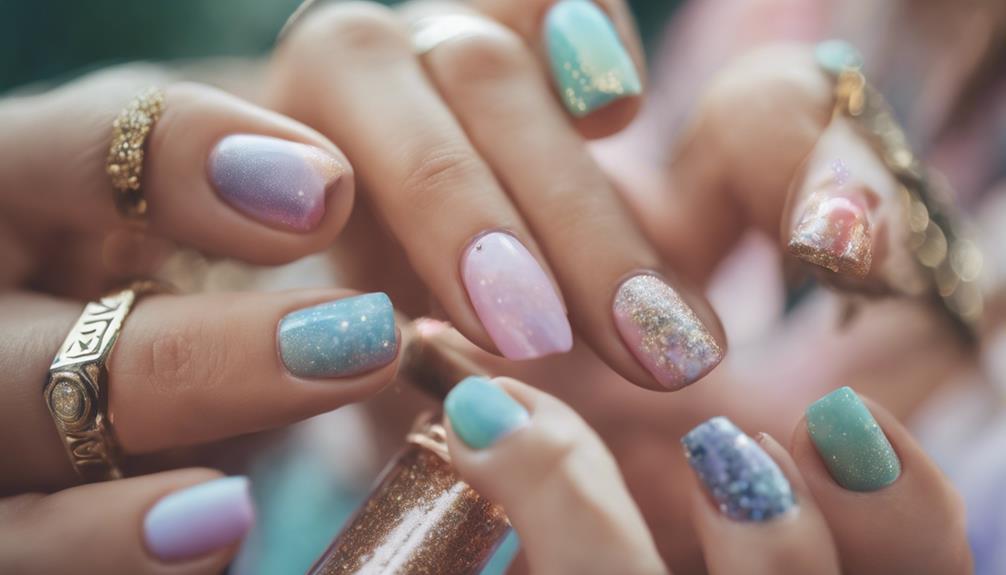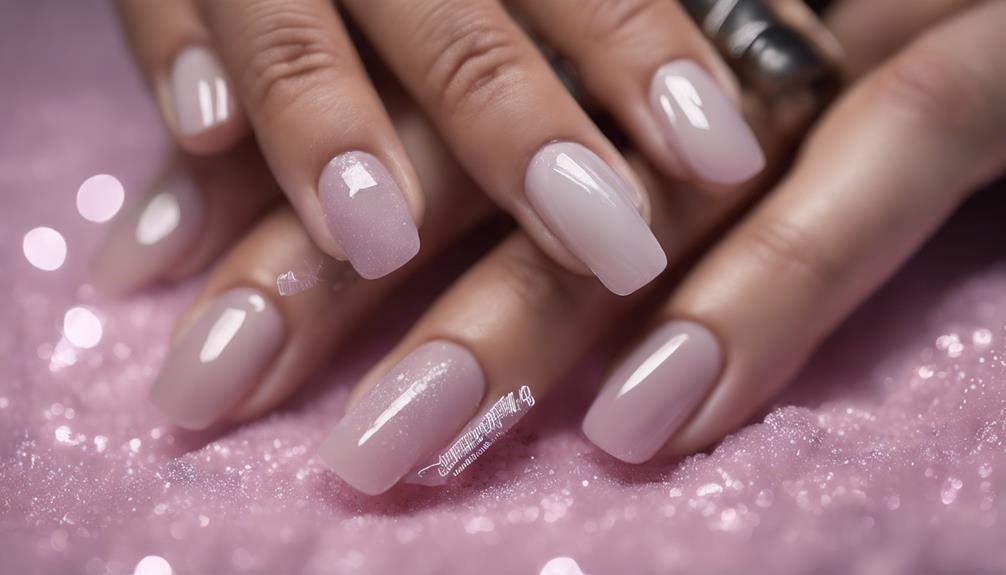Understanding color theory in makeup and hair is crucial for creating cohesive looks that enhance natural beauty. By grasping primary, secondary, and tertiary colors, one can mix shades effectively. Knowing warm versus cool undertones helps match colors to skin tones for a harmonious appearance. Playing with complementary colors in makeup can enhance features, while color correcting techniques can balance complexion. Choosing hair shades based on skin undertones, complementing eye colors with appropriate shades, and selecting lip colors according to skin undertones are key aspects. Application involves mastering color mixing, utilizing warm and cool tones, and harmonizing hair and makeup for a polished look.
Key Takeaways
- Primary colors mix to create secondary colors, while tertiary colors are a mix of secondary and primary colors.
- Warm undertones suit yellow or golden hues, while cool undertones work well with blue or pink tones.
- Complementary colors like red and green can enhance features when applied strategically in makeup.
- Hair shades should be chosen based on warm or cool tones to complement skin undertones.
- Eye colors can be enhanced with makeup shades that contrast or complement the natural eye color.
Primary, Secondary, and Tertiary Colors
Understanding the distinctions between primary, secondary, and tertiary colors is essential in mastering color theory for makeup and hair styling. Primary colors, which include red, yellow, and blue, form the basis for all other colors.
By combining primary colors, secondary colors such as orange, green, and violet are created, expanding the palette for makeup and hair artists. Tertiary colors, on the other hand, result from mixing primary and secondary colors, offering a diverse range of hues for creative looks.
Color mixing is a fundamental aspect of working with primary, secondary, and tertiary colors in makeup and hair styling. By understanding how these colors interact, artists can achieve harmonious color combinations that enhance their clients' features.
Mastery of primary, secondary, and tertiary colors allows for the creation of visually appealing looks that cater to individual preferences and styles. Experimenting with different color combinations can lead to unique and stunning results in the world of makeup and hair design.
Warm Vs Cool Undertones
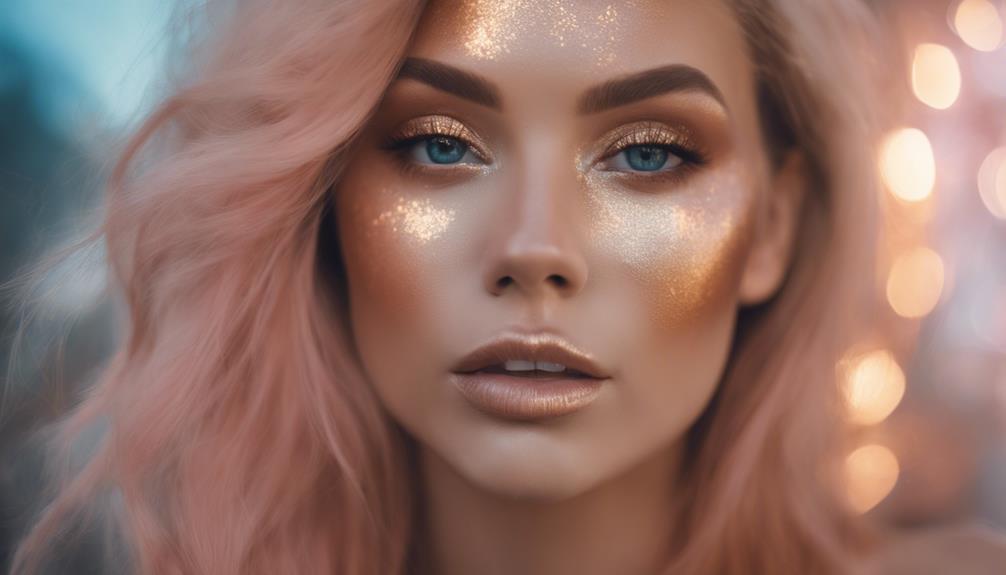
When it comes to makeup and hair color choices, understanding warm versus cool undertones is essential. Tone determines the shades that will complement our skin best.
Matching undertones correctly can make a significant difference in achieving a harmonious and flattering look.
Tone Determines Color
In makeup and hair, distinguishing between warm and cool undertones is vital for selecting complimentary colors that enhance one's natural features. Warm undertones exhibit yellow, golden, or peach hues, while cool undertones present pink, blue, or red undertones.
Understanding these undertones is essential in choosing makeup shades that harmonize with the skin, creating a cohesive and flattering appearance. Warm undertones are commonly found in individuals with golden or olive skin tones, whereas cool undertones are often seen in those with fair or rosy skin tones.
The interplay of undertones plays a pivotal role in determining the most suitable hair and makeup colors for each person. By identifying whether someone has warm or cool undertones, makeup artists can skillfully select the right foundation, blush, lipstick, and eyeshadow shades to enhance their natural beauty and achieve a polished look that complements their unique features.
Skin Undertone Importance
Our skin undertone, whether warm or cool, greatly influences which colors will enhance our natural features in makeup and hair styling. Understanding whether you have warm undertones with yellow or golden hues, or cool undertones with pink or blue hues, can make a significant difference in how flattering your chosen colors will be. This knowledge is essential in selecting the right foundation, blush, and lipstick shades that will complement your skin undertone.
To simplify the process, here is a quick reference guide for colors that work best with warm and cool undertones:
| Warm Undertones | Cool Undertones |
|---|---|
| Bronze | Pink |
| Peach | Fuchsia |
| Golden | Blue-based hues |
Matching Undertones Correctly
To achieve a harmonious makeup and hair look, it's essential to match undertones correctly, distinguishing between warm and cool tones. Understanding undertones is fundamental in the domain of color theory for makeup and hair.
Warm undertones typically exhibit yellow, golden, or peachy hues, while cool undertones lean towards pink, blue, or red undertones. When selecting foundation, concealer, and makeup shades, identifying these undertones is vital for a seamless blend with the skin.
For warm undertones, shades like gold, warm reds, and oranges tend to complement the skin tone best. Conversely, cool undertones harmonize well with silver, jewel tones, and blues.
A quick way to determine undertones is by examining the veins on the wrist – greenish veins often indicate warm undertones, while bluish veins suggest cool undertones.
Matching undertones correctly ensures that makeup blends flawlessly with the skin, enhancing natural beauty and creating a polished overall appearance.
Complementary Colors in Makeup
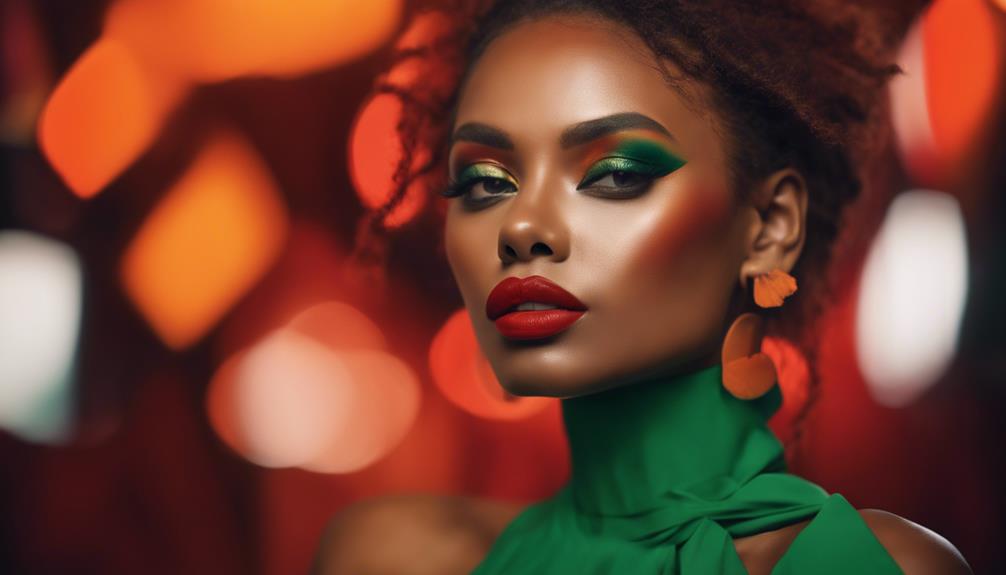
Complementary colors in makeup are hues that sit opposite each other on the color wheel. When paired together, they create a striking contrast that enhances features.
Mixing complementary colors can either intensify or neutralize the overall effect, making them a powerful tool in makeup application.
Color Wheel Basics
Exploring the fundamentals of color wheel basics reveals the importance of complementary colors in makeup application. The color wheel consists of primary colors – red, blue, and yellow – along with complementary colors that sit opposite each other, like red and green.
Understanding warm and cool tones is essential for makeup artists to create balanced looks using these complementary pairs. Complementary colors, such as red and green or purple and yellow, create high contrast when combined. In makeup application, they can neutralize or enhance each other, making them ideal for color correction. For instance, green concealer can cancel out redness, while peach tones can help counter dark circles.
Makeup artists leverage this knowledge to achieve harmonious makeup looks by strategically using complementary colors. By mastering the basics of the color wheel and understanding how complementary colors work, makeup artists can enhance features and create visually striking makeup effects that captivate and impress.
Enhancing Features With Color
Understanding how to utilize complementary colors effectively can greatly enhance facial features in makeup application. Complementary colors, found opposite each other on the color wheel, create vibrant contrasts that can neutralize or enhance tones in the skin, making them essential for color correction.
By considering color temperature and creating harmonious blends with primary colors, makeup artists can achieve balanced and flawless looks. Here are four key ways to enhance features with complementary colors:
- Green complements redness, providing a natural balance to the skin.
- Mauve counteracts sallow undertones, giving a healthy and radiant appearance.
- Pink brightens the skin, adding a youthful and fresh glow.
- Yellow lightens dark complexions, while peach or orange correctors are perfect for concealing dark circles, ensuring a flawless complexion.
Color Correcting Techniques
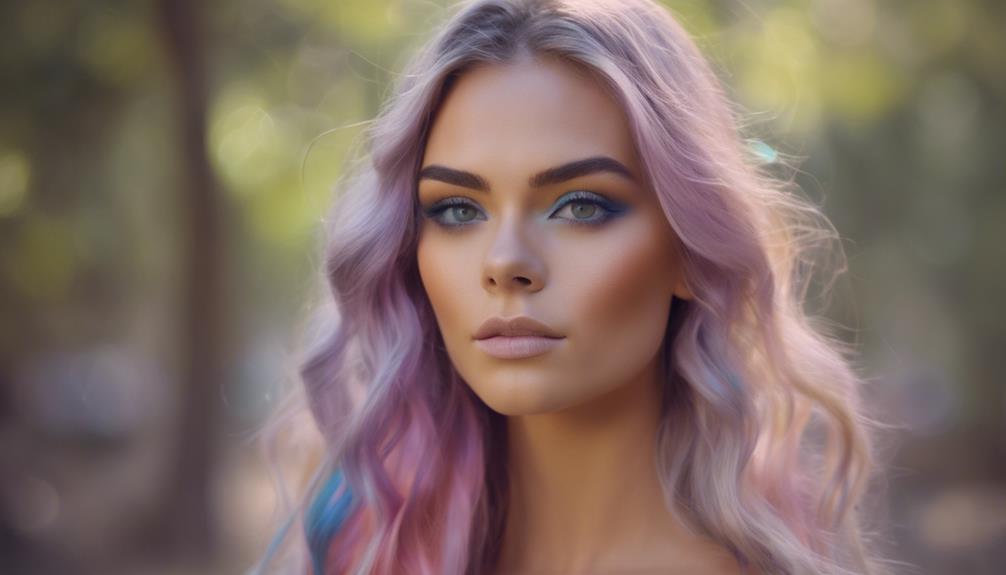
To correct various skin imperfections, color correctors are utilized in makeup application to neutralize specific tones and enhance overall complexion. Color correctors such as green, mauve, pink, yellow, and peach/orange can help minimize redness, sallow undertones, brighten skin, lighten dark complexions, and address dark circles, respectively.
Understanding complementary colors on the color wheel, like green and red, purple and yellow, or orange and blue, is important for neutralizing or enhancing specific tones in makeup. It's also essential to grasp warm (yellow undertones) and cool (blue undertones) colors to match foundation and concealer to various skin tones effectively.
Warm tones, associated with golden, yellow skin and golden brown, blonde, red, or dark hair, are complemented by warm colors. On the other hand, cool tones, linked to olive, fair, rosy skin and blue, green, hazel, or dark eyes, match well with cool colors.
Utilizing color theory in makeup application can guide choices like pairing peach blush with warm skin tones and pink, fuchsia, or peach blush with cool skin tones. Lip colors like nude, beige, brown, or orange can enhance warm tones, completing a harmonious look.
Flattering Hair Shades
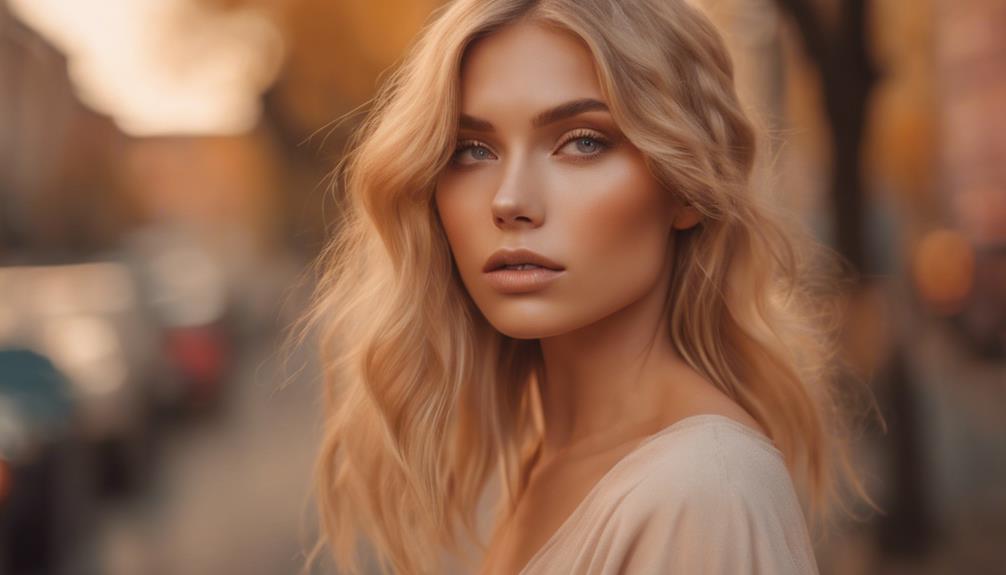
Given the significance of hair shades in enhancing one's overall appearance, selecting colors that complement both skin tone and eye color is essential for a cohesive and attractive look. When choosing flattering hair shades, it's important to take into account factors such as skin undertones and eye color to create a harmonious and balanced appearance.
Here are some tips to guide you:
- Warm Colors for Yellow Undertones: Opt for warm hair shades like golden blonde to complement yellow undertones in the skin, creating a radiant and glowing look.
- Cool Tones for Blue Undertones: Cool hair shades such as ash brown work well with blue undertones in the skin, adding a touch of sophistication and elegance to your overall appearance.
- Enhancing Eye Colors: Red hair colors can bring out the green or hazel tones in your eyes, providing a striking and eye-catching contrast that enhances your features.
- Adding Depth to Fair Skin: Dark hair colors like black or espresso can add depth and dimension to fair skin tones, creating a bold and dramatic look that complements your complexion beautifully.
Enhancing Eye Makeup With Color
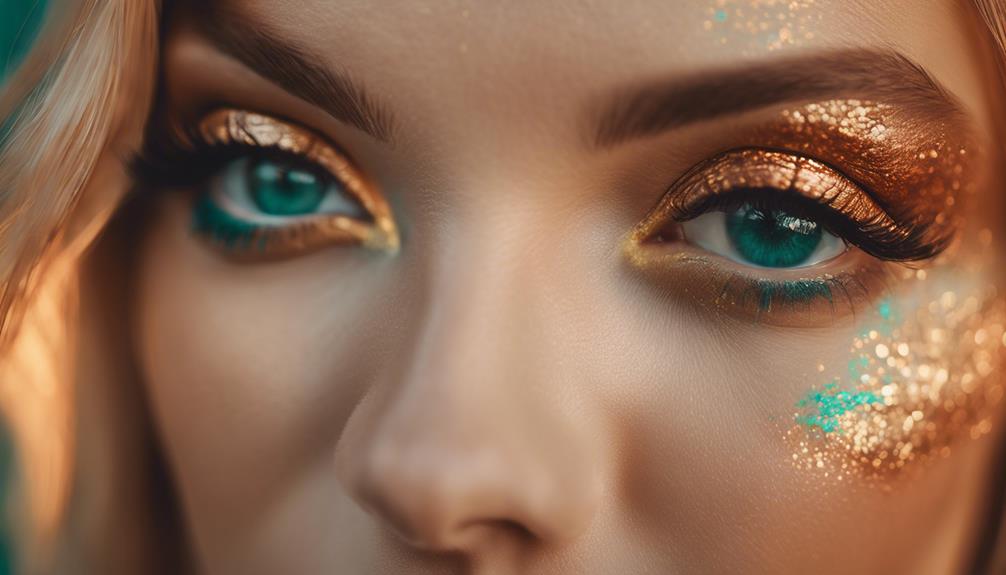
Enhancing our eye makeup with color is a key technique to elevate our overall look and emphasize our unique eye features. Understanding color theory helps in choosing the right shades to enhance eye color. Warm tones like reds and oranges can complement blue eyes, while cool tones like purples and blues can enhance brown eyes. Using complementary colors such as purple for green eyes can make them pop, while neutral shades like taupe create a softer look. Eyeliner in contrasting colors can create a bold effect; for example, navy can enhance brown eyes, and copper can complement green eyes. When it comes to mascara, dark shades like black or brown add definition to lashes, while colored mascaras like blue or plum can add a fun twist to eye makeup.
| Eye Color | Recommended Colors |
|---|---|
| Blue Eyes | Reds, Oranges, Purples, Blues |
| Brown Eyes | Purples, Blues, Taupes |
| Green Eyes | Reds, Oranges, Coppers, Purples |
| Hazel Eyes | Greens, Golds, Browns |
Lip Colors for Every Look
Exploring a variety of lip colors can transform and complete any makeup look, enhancing our features and overall style effortlessly. When considering lip colors, it's essential to take into account our skin tone and undertones to achieve a harmonious appearance.
Here are some tips on choosing the right lip colors:
- Warm Skin Tones: Nude, beige, and brown lip colors complement warm skin tones beautifully, offering a natural and understated look.
- Cool Skin Tones: Pale rose, wine, and classic red shades enhance cool skin tones, adding a touch of sophistication and elegance.
- Balancing Undertones: Colors like peach, fuchsia, and pink can brighten and balance different undertones, creating a fresh and vibrant look.
- Mixing and Matching: Don't be afraid to experiment with mixing lip colors to create custom shades that suit your unique style and personality.
Color Theory for Foundation Matching
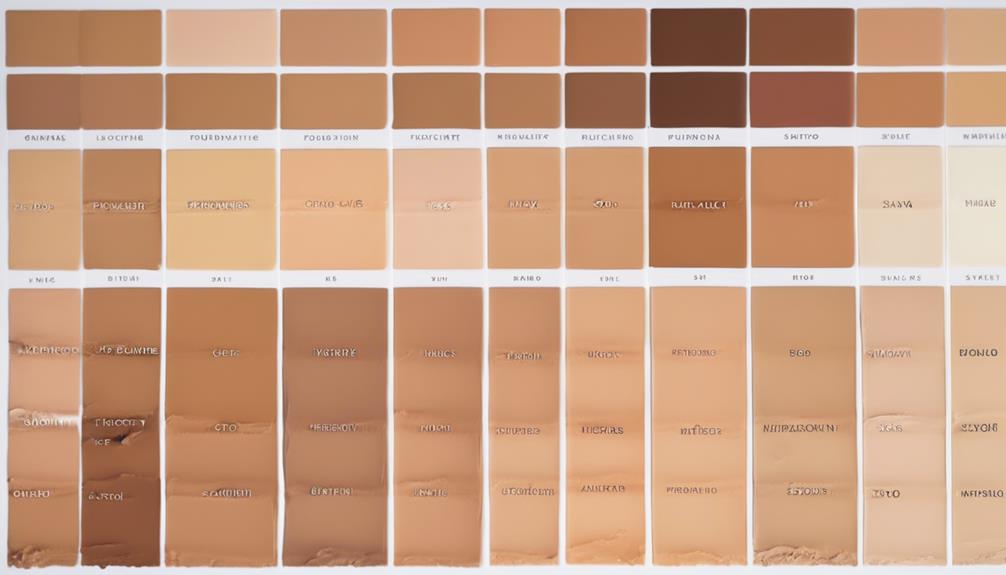
Taking into account skin undertones is essential in foundation matching for achieving a seamless and natural blend that complements the client's complexion.
When considering color theory for foundation matching, it's important to understand warm and cool tones, which derive from primary colors. Warm undertones in the skin are best complemented by foundation shades with yellow or golden hues, creating a harmonious and flattering look.
On the other hand, cool undertones favor foundation shades with pink or blue undertones to enhance the complexion. Neutral undertones offer versatility, adapting well to both warm and cool tones in foundations.
Advanced Color Systems in Beauty
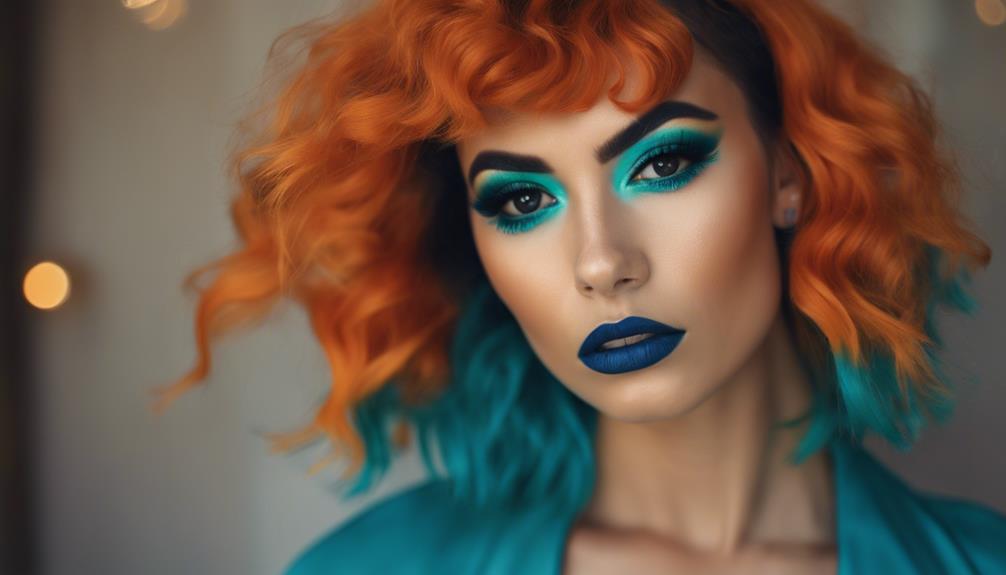
Advanced color systems in beauty offer a comprehensive framework for understanding and utilizing various color theories to enhance makeup and hair techniques. These systems encompass a range of models such as RYB, CMY, CMYK, and RGB, each serving specific purposes in the beauty industry.
Here are four key aspects to take into account:
- Primary colors: Found at the core of color theory, these hues can't be created by mixing other colors and are fundamental to understanding color mixing techniques.
- Color wheel: This essential tool organizes colors in a circular format, aiding in the selection of harmonious color combinations for makeup and hair.
- Complementary colors: Pairing colors opposite each other on the color wheel creates striking contrasts, enhancing the vibrancy of beauty looks.
- Undertone: Understanding undertones is essential in makeup application, as it influences the choice of foundation shades and color palettes to complement different skin tones effectively.
Frequently Asked Questions
How to Understand Color Theory in Makeup?
Understanding color theory in makeup involves grasping primary, secondary, and tertiary colors to create cohesive looks. Different combinations of these colors can be used to achieve various effects, such as creating contrast or harmony in a makeup look. Understanding color theory can also help in choosing the right shades for different types of makeup, whether it’s for eyeshadow, lipstick, or blush. By applying these principles, makeup artists and enthusiasts can elevate their looks and make informed color choices.
Recognizing warm and cool tones aids in selecting makeup shades that complement skin.
Complementary colors can enhance or neutralize specific tones in makeup.
Color correctors like green, mauve, pink, yellow, and peach/orange address various skin tone issues.
Matching warm or cool undertones in foundation and concealer is essential for a flawless makeup base.
What Is the Color Theory in Cosmetology?
Color theory in cosmetology is the art of understanding how colors interact to create harmonious combinations in makeup and hair. It serves as a guide for selecting the right shades to enhance features and correct imperfections.
Primary colors like red, yellow, and blue are fundamental, while complementary colors are used to neutralize or enhance tones. Understanding warm and cool colors aids in matching foundations, blushes, and lip colors to different skin undertones for a flattering look.
What Is the Color Theory of Skin and Hair?
Skin and hair color theory involves understanding undertones and tones to create harmonious looks. Skin undertones categorize as cool, warm, or neutral, guiding makeup choices.
Complementing hair colors using the color wheel guarantees a cohesive appearance. Matching foundation to skin undertones is essential for a seamless finish.
Warm skin tones suit golden and peachy makeup shades, while cool tones harmonize with pink and berry hues. Colorists use theory to blend hair colors effectively for stunning results.
How Do You Use Color Theory When Choosing Cosmetics for Makeup Application?
When choosing cosmetics for makeup application, we consider skin undertones, using complementary colors to neutralize or enhance specific tones on the face.
By selecting warm or cool colors that harmonize with the client's features, we create a flattering look.
Understanding the color wheel helps us mix primary, secondary, and tertiary colors for diverse and harmonious makeup looks.
Color correctors like green for redness or yellow for dark circles address specific skin concerns effectively.
Conclusion
To sum up, understanding color theory in makeup and hair can greatly enhance your beauty routine. By learning about primary, secondary, and tertiary colors, warm vs cool undertones, complementary shades, and color correcting techniques, you can create stunning looks that flatter your features.
Whether it's choosing the perfect lip color or finding the right foundation match, color theory is a valuable tool in achieving a polished and harmonious appearance. So next time you reach for your makeup bag, consider the power of color theory to elevate your look.
